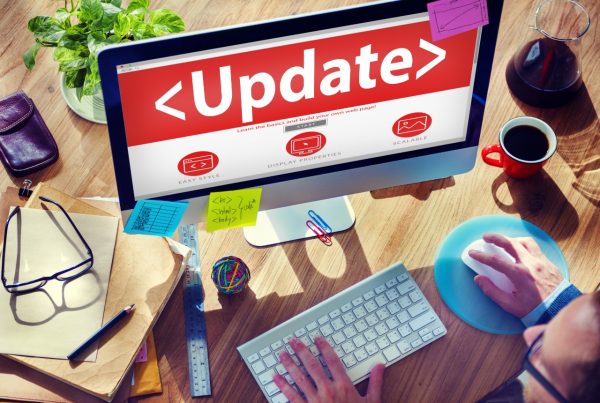Table of Contents
SEO(Search Engine Optimization) is the process of optimizing your web pages so that they appear high in Google and other search engines. This shows that when people search online, they are more likely to come across your website. So, in this day and age, when everything is going online, SEO plays a critical role in promoting our businesses. Website designers for small businesses are relying on SEO strategies.
So practically if you’re operating a company, starting a restaurant, employing people, selling digital products, or running a small business, you need a website, and it’s a must-have if you want to scale your business online. There are also the best web designers in Chennai who can do this for you if you’re unable to do it on your own.
Let’s say you end up creating a website for your company, but if it doesn’t have any web visibility, it’s almost the same as not having one. Because if people don’t see the websites, they won’t know about them, and you’ll be out of luck either way. This is when SEO and UX/UI will come into the picture by the best website design companies. An effective SEO strategy improves your online presence and gives you more online traffic.
SEO and UX/UI work well together because SEO as a pathway leads you to the target, which is UX/UI. So, when displaying web pages, it is critical to consider how you are presenting them. As a result, UX/UI aids in the promotion of content that has been established through SEO strategies. So, there are the best website design companies that can customize all of it for your online presence.
What is UX?
The “UX” component relates to the interaction of the user with a service or product. UX design takes into account all of the various elements that shape this experience. Primarily, UX refers to anything that can be witnessed, such as a website, a vending machine, or a trip to the retailer shop. A UX perceives how the experience makes the user feel, as well as how simple it is for the user to complete their desired tasks.
- Storytelling
- Objective
- Usability
- Engagement
What is UI?
“UI” exists for the user interface. The UI of a webpage or website is its visual configuration. It is composed of the icons that users click, the text that they recite, the illustrations, sliders, input text fields, and all of the other components with which the user interacts.
- Interactive design
- Layout
- Branding
- Visual design
What impact does UX/UI have on SEO?
Through various metrics that search engines use to track user engagement, UX/UI designs have a direct and powerful impact on your SEO rankings. It supports you in considering how users engross and intermingle with your website by compelling into factors like speed of the web page, receptiveness to the mobile, layout of headers, and structure of URL.
Google’s algorithm is constantly being updated to better align its search engine outcomes with what its users are looking for.
Some important points to remember here are:
- The first point has to be the website’s content which should be engaging.
- Pick your keywords carefully.
- The speed of the website matters a lot. A lagging website is a big no.
- Adding backlinks from reliable websites.
- Hyperlinks that connect relevant pages on your website.
- Last but not least is your website cell phone ready!
All of these things are related to on-page and off-page SEO, either directly or indirectly. On-page SEO aids in the optimization of your content through the use of primary and secondary keywords, allowing your website to rank organically. Off-page SEO, on the other hand, helps to increase the credibility of your website by including backlinks from several other trustworthy websites.
Almost everything associated with on-page SEO intertwines in some way with UX and UI. It makes no difference if you have the best content but people are inept to consume it due to an inconvenient website experience.
Association of UX with SEO
Your website’s usability, a knack to respond, and effortlessness of use all influence SEO. Ranking your website on Google will be extremely difficult if people are not liking your content. Google algorithm employs machine learning and measures how people interact with a web page. It ranks the page regarding the quality of the experience using signals such as pages per session, bounce rate, dwell time, and organic CTR. So obviously higher the quality of all these parameters better will be your Google ranking.
Association of UI with SEO
Your website’s UI should be operational and smooth to maximize your SEO value. Sticking to clean web designs that increase user readability is the most important. Page jumping should be very much simple. Also, any action you want users to take on your websites should not be more than 3 clicks. It’s also critical to assess your site’s backend, which contains page specifications, loading speed, adaptable design features, and playable videos.
How to improve UI/UX for SEO?
The primary goal of UI and UX is to keep viewers on individual web pages for extended periods and engage with your content features. To accomplish this, you should concentrate on a few key areas to ensure that UX and UI have a beneficial impact on your SEO.
- Speed of your website
- Easy to use features
- Accessibility
- Mobile friendly
- Readable content.
UI, UX, and SEO working as a team:
UX, UI, and SEO all have the same goal to assist people in completing the tasks they have chosen to do. The user experience and user interface of a website have a significant impact on its SEO and Google rankings, whether you’re doing it yourself, using a marketing strategy, or collaborating with the best website design companies.
Always be on the lookout for new ways to enhance user experience. Fortunately, the union of web development and UX and UI design has resulted in a significant increase in software creation and design without the need for coding skills. This enables companies and modern marketers to improve their UX and UI for SEO, resulting in sites that their customers will enjoy.








